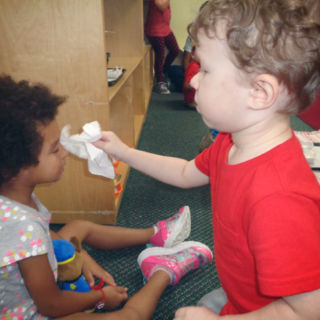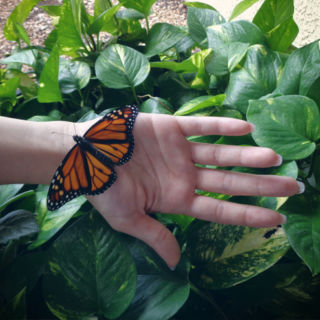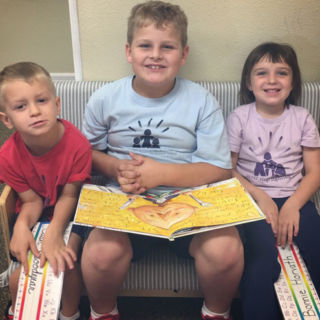
As our executive team and team of teachers embark on our BMS, RMS, and SMS reaccreditation process, we continue to return to the underlying reason of why… We are proud of our Montessori heritage. We are dedicated to quality education. But the fundamental reason is our commitment to the children.
Learn more about the qualities of an authentic Montessori School and why accreditation is so important in this article by Shanna Honan (shared from http://www.chesapeakemontessorischool.com/qualities/).
7 Qualities to Look For In an Authentic Montessori School
When parents begin looking for a Montessori School, there are several important things to look for and questions to ask. The name “Montessori” is not a franchise or chain. Every school is owned and operated independently. Not all “Montessori” schools follow authentic Montessori practices, some schools may not even have Montessori trained teachers. What should you look for in an authentic Montessori program?
- Is the school affiliated or accredited by a national or international Montessori organization, such as the American Montessori Society (AMS), Association Montessori Internationale (AMI) or The International Montessori Council (IMC)? If the answer is yes, go to the association’s website and double check. Affiliation by a Montessori organization, although optional, demonstrates a level of professional integrity.
- Do all of the lead teachers hold Montessori credentials from AMS, AMI or a MACTE accredited institution? MACTE is the Montessori Accreditation Council for Teacher Education. MACTE is an international organization that accredits teacher education programs. MACTE is recognized by the US Department of Education as the leading authority on Montessori teacher education. If the answer is yes, ask to see the teacher’s Montessori credential. Double check at MACTE.org to make sure the teacher education program, from which the teacher received the credential, is in fact an accredited program. AMI and AMS credentials are always recognized as legitimate credentials by the national Montessori community.
- Is the teacher/s credentialed for the level in which is being taught? Maria Montessori was very specific in her approach to educating children at different ages. Montessori teacher education is divided into five age groups, 0-3 years, 3-6 years, 6-9 years, 9-12 years and secondary education. There is specific teacher training for each of those levels. Make sure that the person who will be teaching your child holds a credential for that particular age group. The methodology and materials change significantly for each age group. Only teachers who have been trained at a specific level will have an understanding of how to teach children at that particular age.
- Does the classroom have mixed age groups? Montessori, again, was very specific about having mixed age groups. Children at 0-3 are often times separated due to safety and quality of care reasons. Beginning at age three, children should be in class with other children within that three year age group. Children ages 3-6 (three- kindergarten) are together, 6-9 years (first- third grade), 9-12 (fourth-sixth grade), seventh- ninth, etc. The mixed age groups allow for many wonderful things to take place in the classroom, including peer teaching, accommodating each child’s developmental and academic needs, and learning appropriate social interactions, just to name a few.
- Is the classroom a prepared environment? Montessori classrooms should be beautiful, peaceful and contain a full compliment of Montessori material. The teacher, through the teacher education program, not only learns how to use the material, but the theory behind the Montessori Method as well. Authentic Montessori classroom are places where the children are working purposefully and contentedly. The children should be using a variety of materials and working purposefully in every curricular area of the room. At the Children’s House level (3-6 years), there should not be any type of worksheet or workbook used. All the children need is the Montessori materials, and eventually paper and pencil when they begin to write. The elementary classrooms should have minimal worksheets. Children should be working with materials and following up by using the material and a notebook to record their work.
- Children should have certain freedoms, depending on their age. In Children’s House, they should have the freedom of movement, choice of work and repetition of work. Freedom does not mean “free for all.” The Montessori classroom should be a peaceful setting where children work purposefully. In the Children’s House classroom, the teachers plan for and give individual presentations. The child’s readiness drives the curriculum, not his chronological age. In elementary classrooms, the curriculum drives the child, still allowing for individual readiness within an age appropriate setting. There should be large blocks of uninterrupted work time in the morning and afternoon.
- The Montessori classroom should nurture the human spirit. It should be a place where individual differences are not only respected, but valued. The classroom should be a place of cooperative learning, respect and responsibility. In Montessori we like to say we educate “the whole child.” This means we look at the child from the social, emotional, cognitive, spiritual, physical and artistic standpoint. Montessorians are committed to continued growth in all areas. Children in a Montessori classroom should appear happy and engaged in their learning. They develop a love of learning, which extends far beyond the current classroom and time. Montessori, if done well, is a preparation for life.
If everyone had a Montessori school they wouldn’t need me.
— Sigmund Freud



